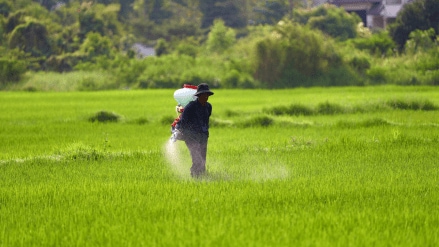The Niti Aayog has roped in Crisil to undertake an evaluation of the fertiliser subsidy scheme, which accounts for 45% of the Centre’s budget outgo on major subsidies, to assess its efficiency and fiscal sustainability for policy intervention, sources said.
Nutrient Based Subsidy (NBS) policy came into effect from April 1, 2010, for Phosphatic and Potassic (P&K) fertilizers. Under this, while the subsidy is meant to be fixed, in practical terms, the government has enhanced it, to insulate farmers from global price hikes of imported items. The urea subsidy scheme in India has been in place since the implementation of the Retention Price Scheme (RPS) in 1977; for long years, the issue prices to farmers have remained the same.
Fertiliser subsidy, which has remained around Rs 70,000 crore/year for the last decade, rose 58% on year to Rs 1.28 lakh crore in FY21 as the government cleared arrears. However, the fertiliser subsidy has remained elevated post-Covid with the government not able to pass on the rise in cost even under the decontrolled P&K fertilisers. As a result, the fertiliser subsidy rose to a record Rs 2.55 lakh crore in FY23 when international prices jacked up.
Even for the current financial year, the fertiliser subsidy may rise by around 17% to Rs 1.95 lakh crore as against the budget estimate of Rs 1.63 lakh crore, underscoring the government’s need to pass on the rise in costs, which is seen as a fiscal vulnerability.
There has been no change in the retail prices of urea since November 2012, while there has been no change in the retail prices of decontrolled P&K fertilisers since May 2012.
In this context, the Cisil will assess the long-term fiscal sustainability of the current subsidy outgo under various fertiliser subsidy schemes, according to the terms of reference.The analysis would be conducted along the principles of relevance, efficiency, effectiveness, sustainability, impact, coherence, and equity.
It will also assess incentives and regulatory environment to promote fresh investment in new & innovative fertilizers and evaluate whether the current fertilizer subsidy incentivises balanced nutrient use and promotes sustainable fertiliser usage.
According to the ToR, recommendations that lead to an increased financial burden on the government (such as those on increasing budgetary allocation) should be avoided, unless there is sound evidence emerging from the analysis that an increase may be expedient. The focus should be on resource optimization/judicious usage of resources.The Niti Aayog has roped in Crisil to undertake an evaluation of the fertiliser subsidy scheme, which accounts for 45% of the Centre’s budget outgo on major subsidies, to assess its efficiency and fiscal sustainability for policy intervention, sources said.
Nutrient Based Subsidy (NBS) policy came into effect from April 1, 2010, for Phosphatic and Potassic (P&K) fertilizers. Under this, while the subsidy is meant to be fixed, in practical terms, the government has enhanced it, to insulate farmers from global price hikes of imported items. The urea subsidy scheme in India has been in place since the implementation of the Retention Price Scheme (RPS) in 1977; for long years, the issue prices to farmers have remained the same.
Fertiliser subsidy, which has remained around Rs 70,000 crore/year for the last decade, rose 58% on year to Rs 1.28 lakh crore in FY21 as the government cleared arrears. However, the fertiliser subsidy has remained elevated post-Covid with the government not able to pass on the rise in cost even under the decontrolled P&K fertilisers. As a result, the fertiliser subsidy rose to a record Rs 2.55 lakh crore in FY23 when international prices jacked up.
Even for the current financial year, the fertiliser subsidy may rise by around 17% to Rs 1.95 lakh crore as against the budget estimate of Rs 1.63 lakh crore, underscoring the government’s need to pass on the rise in costs, which is seen as a fiscal vulnerability.
There has been no change in the retail prices of urea since November 2012, while there has been no change in the retail prices of decontrolled P&K fertilisers since May 2012.
In this context, the Cisil will assess the long-term fiscal sustainability of the current subsidy outgo under various fertiliser subsidy schemes, according to the terms of reference.The analysis would be conducted along the principles of relevance, efficiency, effectiveness, sustainability, impact, coherence, and equity.
It will also assess incentives and regulatory environment to promote fresh investment in new & innovative fertilizers and evaluate whether the current fertilizer subsidy incentivises balanced nutrient use and promotes sustainable fertiliser usage.
According to the ToR, recommendations that lead to an increased financial burden on the government (such as those on increasing budgetary allocation) should be avoided, unless there is sound evidence emerging from the analysis that an increase may be expedient. The focus should be on resource optimization/judicious usage of resources.
